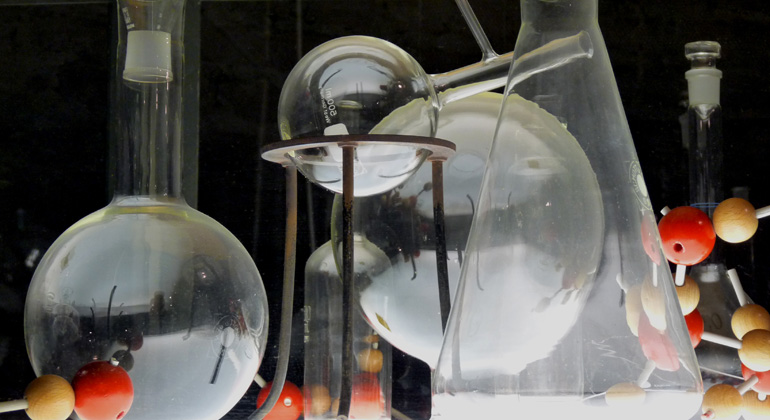A cheaper and cleaner way to make hydrogen peroxide
Researchers at Iccom-Cnr and Imem-Cnr, in collaboration with the University of Trieste, have developed an electrochemical catalyst for the more sustainable production of hydrogen peroxide, starting from a carbon nanomaterial.
The method also solves the safety problems posed by one of the processes developed in recent years for the synthesis of H2O2, which uses hydrogen and oxygen, a potentially explosive mixture. The study is published on Elsevier Journal Chem.
The National Research Council, through the Institute of Chemistry of Organometallic Compounds (Iccom-Cnr) and the Institute of Materials for Electronics and Magnetism (Imem-Cnr), has found an alternative to produce peroxide hydrogen – commonly used to disinfect wounds and garments – using an innovative nanomaterial, free of metal components. The results of the study, published in the journal Chem, can make the process more ecological and economical.
“In recent years, teams of researchers from different countries have focused on finding an ecological process for the synthesis of H2O2. Recently, interest has focused on a method that exploits hydrogen and oxygen, i.e . the two atomic constituents of the molecule “, explains Paolo Fornasiero, Iccom-Cnr researcher and full professor at the University of Trieste, first author of the study in which participated also Francesco Vizza, Iccom-Cnr Director, Manuela Bevilacqua (Iccom-Cnr) and Lucia Nasi (Imem-Cnr), in collaboration with the University of Trieste. “A very clean process, compared to the traditional one that uses anthraquinone, but which presents an important safety problem, since the mixtures of hydrogen and oxygen are potentially explosive. Instead, the process put forward by our research team uses oxygen and water as reagents “.
To react these two components, the research team developed a new nanomaterial. “It is a catalyst based on a properly modified nanostructured carbon component that, unlike other carbon materials already used, is highly selective and efficient and requires only modest amounts of energy to trigger the reaction through oxygen and water”, continues Fornasiero. “Furthermore, since it is free of metal components, the parallel and undesired decomposition reaction is avoided, which in practice is the inverse reaction to the synthesis reaction. This determines an effective accumulation of hydrogen peroxide over time “.
Hydrogen peroxide is widespread not only as a disinfectant but also as an ingredient in various detergents and in the paper and textile industry for whitening cellulose and garments. “It is a very versatile molecule, with a multiplicity of applications that implies an annual world production of around 4.5 million tons”, concludes Fornasiero. “Given the cost and the ecological impact on the synthesis of hydrogen peroxide, our method could favor a more sustainable and cheaper production, as it would avoid the current use of palladium, a rather expensive metal. In this way, the compound could also be used effectively for the removal of water pollutants, because it does not release harmful chemical residues, and be more widespread as sanitary disinfectant in the most economically disadvantaged areas, such as Africa “.








